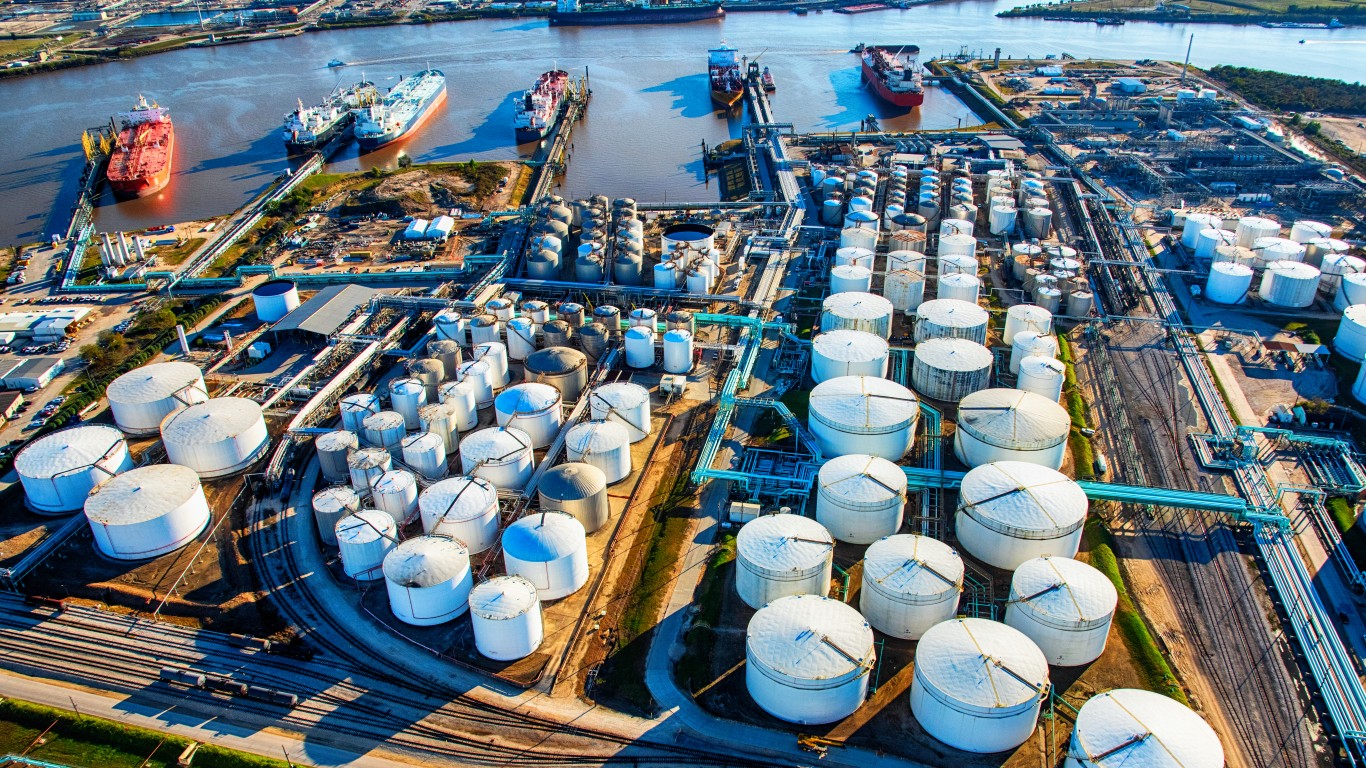Energy
National Emergency Declaration for COVID-19 Helps Oil & Gas, To Fill Strategic Petroleum Reserve

Published:
Last Updated:

With a declaration of a National Emergency around the coronavirus in the United States, President Donald Trump and the United States now have extra powers and capabilities to enact measures that will more rapidly allow for diagnosis and treatment of the COVID-19 pandemic. The moves will also allow for extra measures to be taken that will, at least in this instance, help to support and perhaps even stimulate the economy now that the 11 -year bull market has died and with recession risks flashing. After the worst day since the 1987 Black Monday stock market crash, stocks rebounded handily upon the announcement.
The S&P 500 rose 230 points to close at 2,711.02 and the Dow rose by 1,985 points to close at 23,185.62 on Friday. The tech-heavy NASDAQ also rose by 673 points to close at 7,874.88. These gains were all roughly 9.3%, after losses of more than 9% on Thursday.
While the National Emergency declaration was the catalyst to push stocks even higher in the last 30 minutes of the day, the big news from the stimulus and support equation is how the U.S. plans to treat the battered oil and gas sector of the economy. After recently halting planned oil sales from the Strategic Petroleum Reserve (SPR), the United States is reversing its path and will be buying oil. President Trump’s quote — “We’re gonna fill it up. It’s a good time to fill it up.”
Prior to the last planned sale of oil being cancelled in recent days, the SPR held roughly 635 million barrels of crude oil. The current storage capacity is about 713.5 million barrels.
24/7 Wall St. recently noted that alternative measures beyond the Federal Reserve’s usual tools of cutting interest rates further or bond buying that the U.S. could use cheaper prices to begin acquiring and even stockpiling commodities, including energy. Of the 6 points we made, one pertaining to commodities said:
Also under the special powers, particularly if it pertained to fighting the bogeyman of deflation, the government could begin purchasing certain commodities. Rather than using current plans to unload some of the oil held in the Strategic Petroleum Reserves, the government could try to buy more oil at cheap prices. Low oil and gasoline prices can trigger deflationary pressure. Would the government also decide to start creating a stockpile of other items? Perhaps buying copper and metals, or further on down the commodity chain.
It is without surprise that the major oil companies and the even more beaten down second and third tier companies saw a late-day pop. The gains were perhaps not as strong as some may have expected, at least in the majors, but the end of day buying was notable.
Exxon Mobil Corporation (NYSE: XOM) closed up 2.5% at $38.12. It was closer to $36.50 before the oil comments were made. Chevron Corporation (NYSE: CVX) popped much more with a 9.4% gain to close at $83.42. Occidental Petroleum Corporation (NYSE: OXY) closed up a whopping 19.9% at $14.26.
In the oil services sector, Baker Hughes Company (NYSE: BKR) closed up almost 19% at $12.73 and Halliburton Company (NYSE: HAL) closed up 11.4% at $7.15. Schlumberger Limited (NYSE: SLB) shares closed up a sharp 12% at $16.16 on Friday afternoon.
Further down the line, the moves were very impressive as long as even a look-back to December 31 is not given much thought.
The moves were also seen in the exploration and production stocks that have been battered so much in recent weeks. That said, the move to fill up SPR might not be enough to help their profits. Apache Corporation (NYSE: APA), which just capitulated with a sharp dividend and capex cut, closed up about 4% at $8.07. Chesapeake Energy Corporation (NYSE: CHK) was down to $0.15 as of Thursday’s close, but it roughly doubled (to $0.30) by the end of the day. Whiting Petroleum Corporation (NYSE: WLL) was up about 73% at $1.30 by the end of the day.
The speculative offshore oil stocks have been equally battered in this process. Diamond Offshore Drilling, Inc. (NYSE: DO) shares appear to have closed up 164% at $3.76 on Friday, but it was a $7.19 stock at the end of 2019. Transocean Ltd. (NYSE: RIG) saw a 15% pop to $1.55.
The oil infrastructure leaders within master limited partnerships and related players are not supposed be that sensitive oil prices, but it turns out that when your customers all start losing money and many are now at-risk businesses, even the so-called toll road operators have been under severe pressure of late. Enterprise Products Partners L.P. (NYSE: EPD) was up over 8.8% at $15.52 by the end of the day, and Kinder Morgan, Inc. (NYSE: KMI) was up 6.6% at $14.78 at the end of the day. Plains All American Pipeline, L.P. (NYSE: PAA) closed up 5.3% at $6.70 on Friday.
For a reference against ETFs, the Energy Select Sector SPDR Fund (NYSEArca: XLE) closed up 9.2% at $32.19 on Friday.
Credit card companies are pulling out all the stops, with the issuers are offering insane travel rewards and perks.
We’re talking huge sign-up bonuses, points on every purchase, and benefits like lounge access, travel credits, and free hotel nights. For travelers, these rewards can add up to thousands of dollars in flights, upgrades, and luxury experiences every year.
It’s like getting paid to travel — and it’s available to qualified borrowers who know where to look.
We’ve rounded up some of the best travel credit cards on the market. Click here to see the list. Don’t miss these offers — they won’t be this good forever.
Thank you for reading! Have some feedback for us?
Contact the 24/7 Wall St. editorial team.